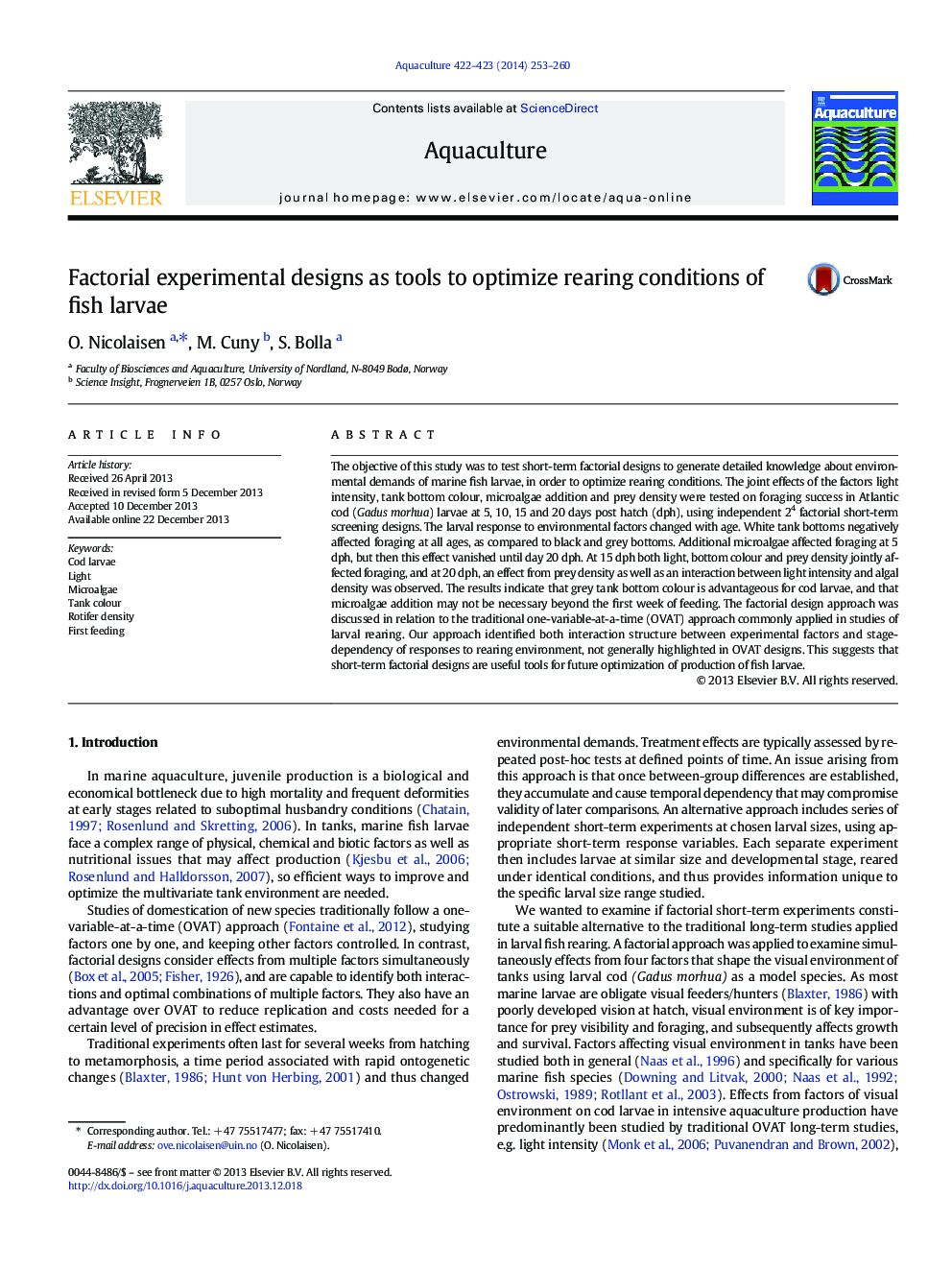| کد مقاله | کد نشریه | سال انتشار | مقاله انگلیسی | نسخه تمام متن |
|---|---|---|---|---|
| 2421963 | 1552861 | 2014 | 8 صفحه PDF | دانلود رایگان |
• The study exemplifies an effective work flow in larval studies.
• New, more detailed information is revealed about larval environmental demands.
• Ways to proceed production optimization are suggested.
The objective of this study was to test short-term factorial designs to generate detailed knowledge about environmental demands of marine fish larvae, in order to optimize rearing conditions. The joint effects of the factors light intensity, tank bottom colour, microalgae addition and prey density were tested on foraging success in Atlantic cod (Gadus morhua) larvae at 5, 10, 15 and 20 days post hatch (dph), using independent 24 factorial short-term screening designs. The larval response to environmental factors changed with age. White tank bottoms negatively affected foraging at all ages, as compared to black and grey bottoms. Additional microalgae affected foraging at 5 dph, but then this effect vanished until day 20 dph. At 15 dph both light, bottom colour and prey density jointly affected foraging, and at 20 dph, an effect from prey density as well as an interaction between light intensity and algal density was observed. The results indicate that grey tank bottom colour is advantageous for cod larvae, and that microalgae addition may not be necessary beyond the first week of feeding. The factorial design approach was discussed in relation to the traditional one-variable-at-a-time (OVAT) approach commonly applied in studies of larval rearing. Our approach identified both interaction structure between experimental factors and stage-dependency of responses to rearing environment, not generally highlighted in OVAT designs. This suggests that short-term factorial designs are useful tools for future optimization of production of fish larvae.
Journal: Aquaculture - Volumes 422–423, 20 February 2014, Pages 253–260
